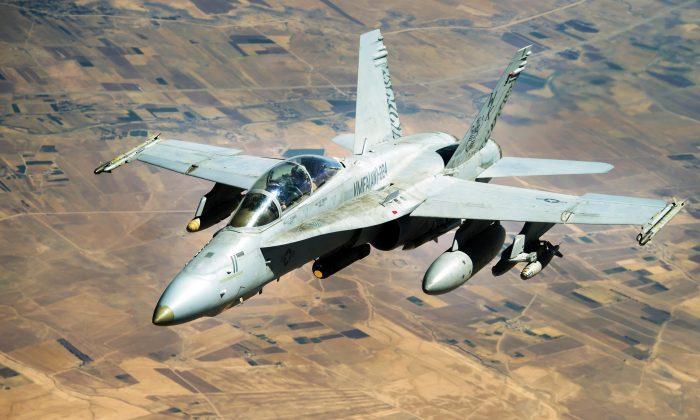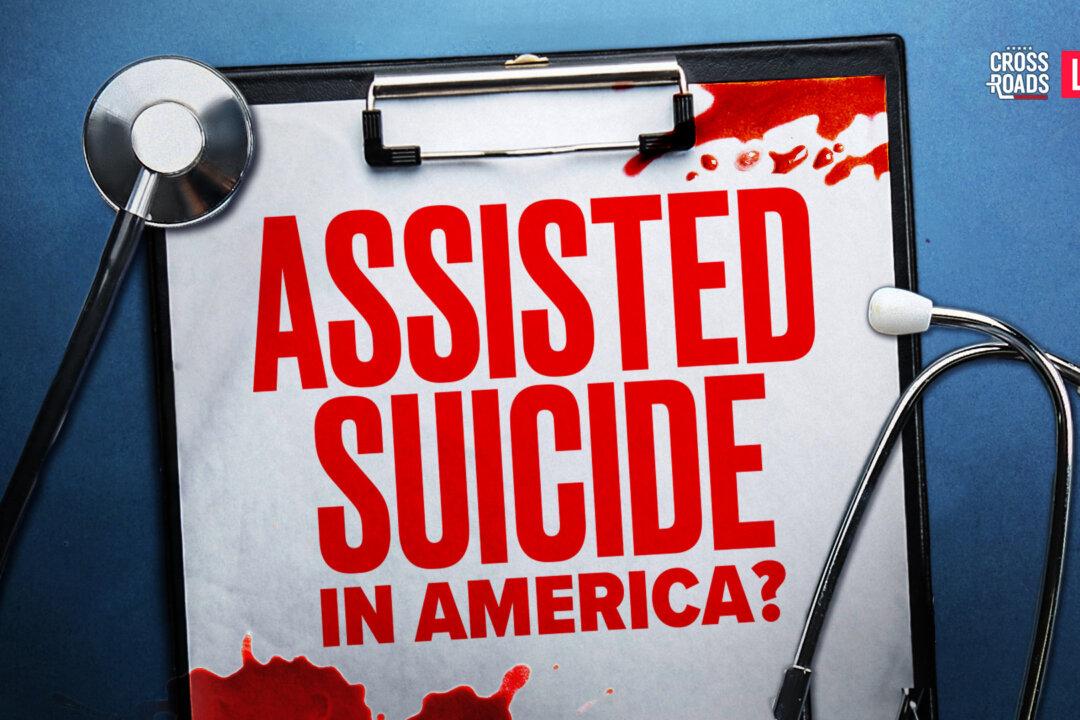A convoy of 17 buses and additional vehicles, carrying an estimated 300 to 500 ISIS fighters and their family members, has found itself stranded in the Syrian desert with nowhere left to run.
The fighters were cornered near the Lebanese border, but struck a deal with the Lebanese terrorist group Hezbollah and the Syrian regime, where it agreed to turn over the bodies of nine Lebanese soldiers it captured in 2014 in exchange for safe passage through Syrian regime territory to Iraq.
But the U.S. and coalition forces had other plans. The agreement between ISIS and Hezbollah would allow the ISIS fighters to continue their war elsewhere, and so the U.S. and coalition forces bombed the path of the convoy on Aug. 29.
The U.S. aircraft operating in Syria have been targeting any fighters who stray too far from the buses, according to Foreign Policy. Images have emerged of the fighters in the buses, clutching their rifles, as they now sit in limbo.
According to Dr. Robert J. Bunker, adjunct research professor at the Strategic Studies Institute, U.S. Army War College, the ISIS fighters have few available options.
“The convoy represents a reverse ‘hostage siege’ in the sense that the stage play is focused upon the dilemmas of a terrorist group rather than the other way around,” Bunker said.
The situation is emblematic of the current state of ISIS, he noted. Fighters of the terrorist group that had once established an Islamic caliphate in Iraq and Syria, with brutal results, are now reliant on foreign aid for food and water for their families, as they await their fates.
Bunker said, “the extended duration of this incident cements the perception that ISIS is now relatively powerless in the region.”
For ISIS, the options are few. Bunker said, “The best outcome is for the fighters of course to surrender—but to whom? They are trapped in a region held by the Assad regime, Hezbollah, Iranian, and Russian coalition with the expectation that, if they surrender, they will find their end in shallow graves or underground prisons.”
Meanwhile, images show that the fighters still have their weapons on them. Bunker noted these include “AK series rifles, pistols, and combat knives—along with fragmentation grenades and potentially even suicide vests or belts.”
And the reputation of ISIS precedes them, meaning that the women are also likely armed, and even the children may have been “indoctrinated and trained as Cubs of the Caliphate,” Bunker said.
The nature of ISIS blurs the line between combatants and non-combatants, Bunker said, “which further complicates the situation.” Experience has also shown, he noted, that “some of the women and teenage children may be carrying suicide devices on them and will detonate when near the military or militia forces that receive them.”
“If the fighters decide to allow the women and children to be evacuated, they will then probably either fight to the death or attempt to scatter at night into the countryside—with either option likely non-survivable,” he said.
The decision about what to do with the stranded terrorists likely will come from Secretary of Defense James Mattis, whom President Donald Trump has placed trust in. Trump explained in his speech on the U.S. strategy for Afghanistan, that the main focus of U.S. operations targeting terrorism is simple: “We are killing terrorists.”
But the U.S. forces have not bombed the buses. A Department of Defense (DOD) notice says that while the coalition is delivering food and water for the women and children aboard the buses, it will also not allow the terrorists to reach their destinations.
“The coalition will continue to take action against ISIS whenever and wherever it is able to do so without harming noncombatants,” says the DOD notice.
Coalition leaders offered a course of action to the Russians, who are in communication with the Syrian regime, which would give them “an opportunity to remove the women and children from this situation.”
Combined joint task force commander, Army Lt. Gen. Stephen J. Townsend, commented on the offer according to DOD, stating that unless Syria takes up the offer, “The Syrian regime is letting women and children suffer in the desert. This situation is completely on them.”
In the last week, 6 of the 17 buses turned around, and headed back towards Palmyra in Syrian territory. Coalition forces did not take any actions to stop them, but the DOD noted “the coalition continues to monitor the remaining 11 buses and communicate with Russian officials who advise the Syrian regime.”


![[LIVE Q&A 04/19 at 10:30AM ET] Major Case Could Overturn Jan. 6 Charges](/_next/image?url=https%3A%2F%2Fimg.theepochtimes.com%2Fassets%2Fuploads%2F2024%2F04%2F18%2Fid5632533-CR-TN_REC_0419-1080x720.jpg&w=1200&q=75)



Friends Read Free